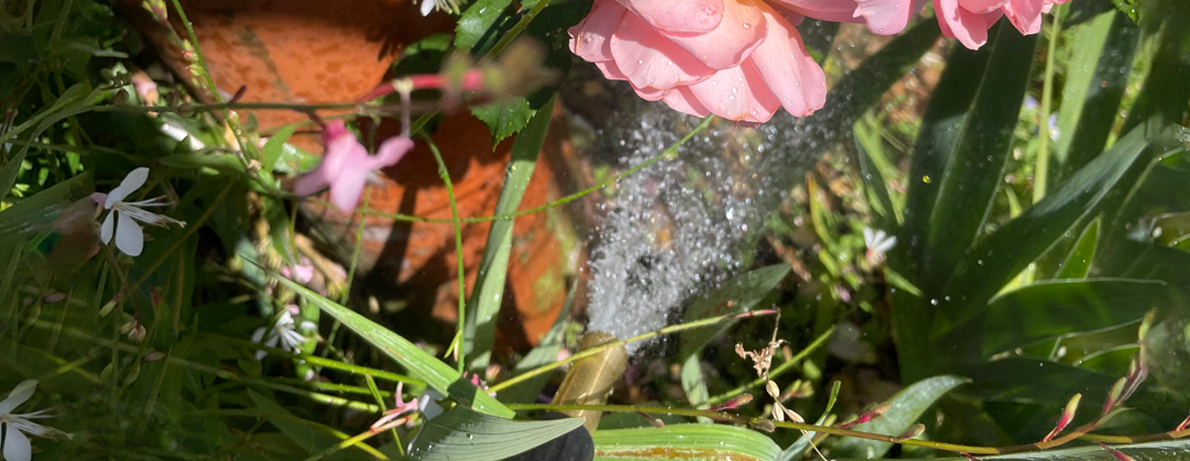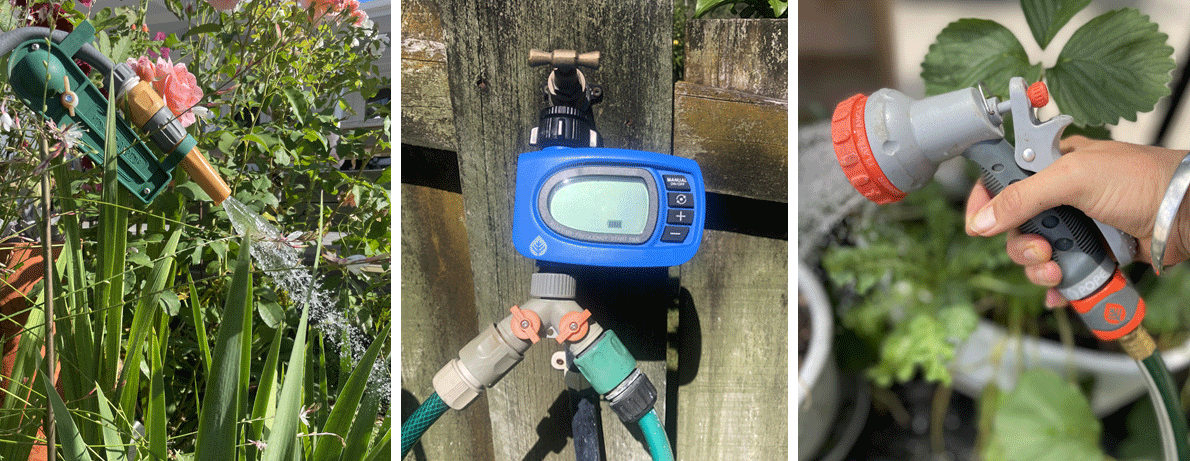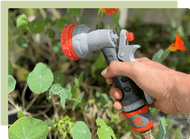Posted by Kelly Jean Reyland
8th Feb 2024
Being waterwise in your garden

There's no single answer to reducing water use in your garden, rather it's a combination of different factors that make your garden a waterwise space. If you're interested in caring for the natural resources you have available to you - starting with looking after your water use is a great place to start.
Make your soil work with you
Clay soil and sandy soil have very different attributes and behave differently under the same conditions. Clay soil particles are incredibly small and packed tightly together. They don’t drain well, and they often have plenty of nutrients, but they aren’t easily accessed. Sandy soil particles are large with lots of spaces which means water drains very quickly – often before the plant can use it and the water will usually take the nutrients with it, leaving soil low in nutrients.
We improve our soil structure by adding organic matter and adding it regularly.
Organic matter; aged animal manure, fallen leaves, kitchen waste, seaweed... It works by breaking up clay particles, enabling water to pass through and roots to grow and access the resources. Organic matter helps glue large sand particles together, helping to hold more moisture and stop the leaching of nutrients. Please be aware that this change doesn’t happen overnight or with one load of organic matter. You have to play the long game, adding organic matter regularly throughout the year.
How does this help us be waterwise? If our soil can both drain and still retain moisture, you have the perfect balance. The soil will hold moisture-a bit like a sponge-that the plant can access later when it needs it. If the soil is also able to drain any excess moisture, there is still plenty of oxygen for the roots to thrive. We must irrigate more to get the plant adequate water while allowing for the losses if soil is too free draining. If the soil doesn’t drain, such as where peoples soil has a clay ‘pan’, the water has nowhere to go, and the plant roots sit in water for days often resulting in root rot and death of the plant.
Planning your garden
It is helpful to group similar plants together, into what are called ‘hydro zones’. This enables you to direct resources efficiently, rather than having to drag a hose around the whole garden or irrigate the entire garden.
Consider grouping into these zones
> Regular irrigation (i.e. your vegetable garden or potted plants): every 2-4 days
> Reduced irrigation: receives irrigation every 4-14 days
> Drought irrigation: only watered during dry spells after plants are established
> No irrigation: not irrigated at all
In an existing garden, draw a plan of your garden and consider what you have planted and how you can make it work better for you. This may involve removing some plants into a different area or replacing high maintenance/regular irrigation plants with tougher, drought tolerant plants in other areas.

The right plant for the right place
Get back to the basics - choose plants that suit the situation they will be planted in. Full sun – part shade – full shade. Drought tolerant – moisture loving. If you plant correctly, the plant will thrive once established, needing fewer resources to be regularly added. If you are planting in pots, you can of course choose the light level for where the pot will be located. The drainage is almost always free draining unless the drainage holes get blocked. Potted plants require regular monitoring for moisture levels.
Irrigation
- Most people irrigate for too long and too often. Often an electronic timer is to blame as we ‘set and forget’. We fail to consider the timer can’t tell if it has rained or if the soil is still damp and doesn’t need more water; it just does its job. It's up to us to monitor the situation and irrigate when needed! Plants will recover from being too dry, but they will most likely succumb to root rot if they're kept too wet for too long. Always err on the side of caution if you are unsure whether to run the irrigation.
- Remember, it's better to water deeply, once or twice a week than a small amount every day.
- It is better to use soaker hoses or drippers so the water can soak into the soil rather than run off. The water goes on the soil rather than the foliage which helps prevent fungal diseases or burning.
- Lawns require more water than garden beds – leaving the grass longer in summer makes it more resilient to dry spells and you can choose grass seed that is more drought tolerant, so it requires less water overall.
- Consider what your soil type is and if it is a heavier clay soil, remember that the water won’t drain easily so check the soil before you run the irrigation again.
What's so good about mulch?
Mulch essentially mimics what nature does. Leaves and other natural material continually fall onto the soil and create a protective layer, holding in moisture and slowly breaking down to help improve the soil at the same time. For more information on why mulch is so good for your garden, check out our recent blog ‘What’s so great about mulch’.
Written for Gubba by Kelly Jean Reyland from Garden Advice NZ (www.gardenadvice.co.nz)


























